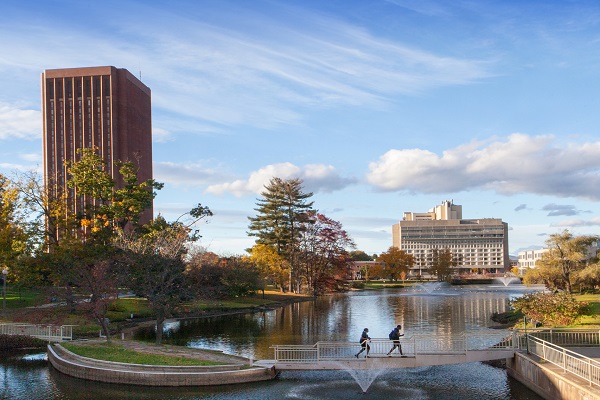University Of Massachusetts Amherst Expert To Create A Sustainable Protein Source Powered By Hydrogen
Lutz Grossmann is on a scientific mission to create tasty, animal-free protein that has a low carbon footprint and is produced without relying on agricultural land – a usual and progressively stressed source of the global food supply.
“The increasing global population and a changing climate increase the pressure on our food and protein supply coming from these natural habitats,” says Grossmann, an assistant professor of food science at the University of Massachusetts Amherst.
“By 2050, we need to produce up to 60% more food, but we don’t want to transform more land into agricultural land. This is the reason why alternative sustainable protein supply chains are urgently needed to ensure future food security.”
To kickstart his long-term mission as an early-career researcher, Grossmann has been awarded a $430,485 New Innovator Grant from the Foundation for Food & Agriculture Research. “We want to prove that humanity is exceptionally resilient when it comes to food production,” he says.
Grossmann is one of 10 researchers to receive the latest round of New Innovator Grants.
“…FFAR is proud to support these early career scientists as they pursue the creative research that will overcome current and future challenges to our agricultural and food systems,” FFAR executive director Saharah Moon Chapotin said in announcing the grant recipients on April 24.
Lutz Grossmann
By 2050, we need to produce up to 60% more food, but we don’t want to transform more land into agricultural land. This is the reason why alternative sustainable protein supply chains are urgently needed to ensure future food security.
Lutz Grossmann, assistant professor of food science
In a nutshell, the Grossmann Lab’s ultimate goal is to try to make protein-rich foods from a bacteria, powered by hydrogen. “We found this interesting technique where you can use gasses to grow bacteria rich in proteins you can later consume,” he explains.
Grossmann plans to use renewable “green electricity” – solar, hydropower or wind – to split water into hydrogen and oxygen – the process of electrolysis – and then use the hydrogen as an energy source for the bacteria, known as hydrogenotrophs.
“The cultivation of these bacteria requires no inputs coming from traditional agriculture,” Grossmann says. “In fact, the bacteria can be grown by bubbling hydrogen, CO2, and O2 in a reactor filled with water that is enriched with nitrogen and minerals.”
In the 1960s, NASA explored the possibility of using hydrogenotrophic bacteria to feed astronauts on space missions. In recent years, the idea has resurfaced in light of the need for alternative and sustainable global food sources.
Grossmann’s past research focused on cultivating other single-cell proteins – from microalgae – using sunlight, carbon dioxide and fertilizer. “Microalgae is still a very interesting biomass,” he says, “but they need a lot of sunlight and for this you need a lot of surface area, so there are some limitations.”
Once Grossmann and his team grow the bacteria, they will focus on the resulting protein-rich byproducts – a sort of cell slurry. “We have to figure out how to extract the protein and optimize the process to preserve the functionality of the proteins. Then we need to understand what kind of foods we can form,” Grossmann says.
For that, he will have a lot of support. Forming sustainable, alternative, plant-based protein is a primary focus of UMass food scientists, many of whom specialize in the complex, multidisciplinary realm of structural design, nanotechnology, protein functionality, bioavailability and metabolism.
“We have to be able to design foods that are nutritious and tasty,” Grossmann says. “In the end, we want to feed people.”

